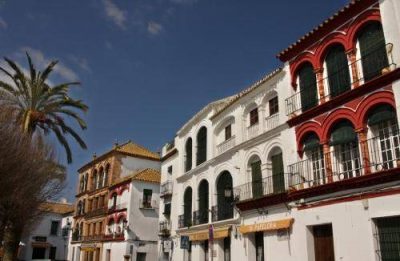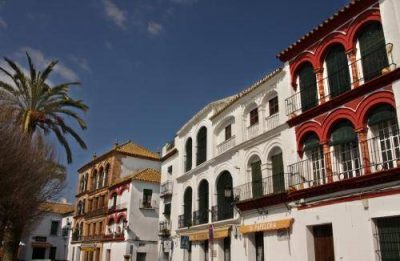The Plaza de San Fernando, also known as the Plaza de Arriba, is today a wide urban space where locals meet, offering a comfortable setting to enjoy the town’s breeze, rest, wander and chat with friends. It is the heart of Carmona’s every day life, and has interestingly been so almost forever. During Roman times, this space was where the town’s two main streets -which formed Carmona’s urban network- crossed: the Cardo and the Decumanus. Furthermore, this space was not only the town’s physical centre, but also administrative, political and social centre, as that is where the forum was built. Throughout the centuries, this square has continued to be used for public acts; religious and social events have been held here, such as bullfighting, since the Modern Age. Nowadays, political and administrative matters are once more in the spotlight in this square, as the town hall is located in a former Jesuit college. It was constructed in 1621 by Pedro Sánchez, brother of the Order. The surrounding buildings in the Plaza de San Fernando boast great historic and artistic interest. There is a great variety of styles; however most the houses have one single noble floor, over the ground floor, where open arches in the facade give way to balconies. It is pretty certain that the bourgeoisie and influential classes would stand out on the balconies to watch public acts and religious and social celebrations that took place in the Plaza de San Fernando, hoping too that they were being watched by the public below. Most of these building are from the 18th and 19th centuries, but there are some older constructions, from the 16th century. Of which, the following are most impressive: • The former recruitment centre, which was built in 1588, as the plaque above the door indicates. The construction is characterised by a straight-lined door. Above the door, on the upper floor, is a wide row of balconies with five arches on white marble columns. • The Madre de Díos convent -construction of the Madre de Díos Dominican nuns convent started in 1520. The works continued until the 17th century, meaning that it also included elements of baroque style. The house is of Mudejar style and is a 16th century building, which received this name given its Islamic inspiration.
Address
Address:
Plaza de San Fernando,Carmona
GPS:
37.472867913258, -5.6385747001222










